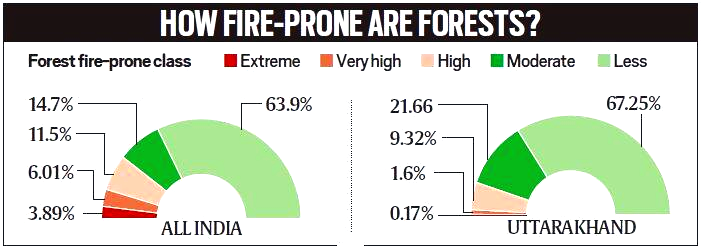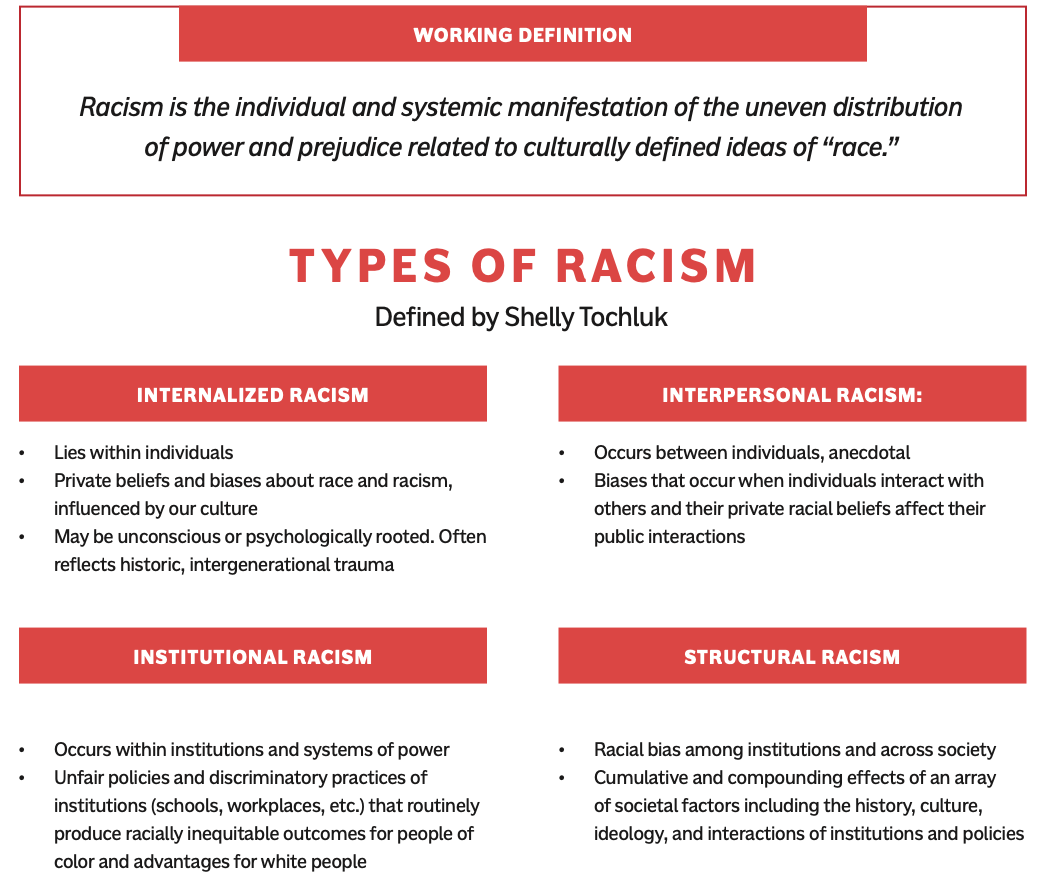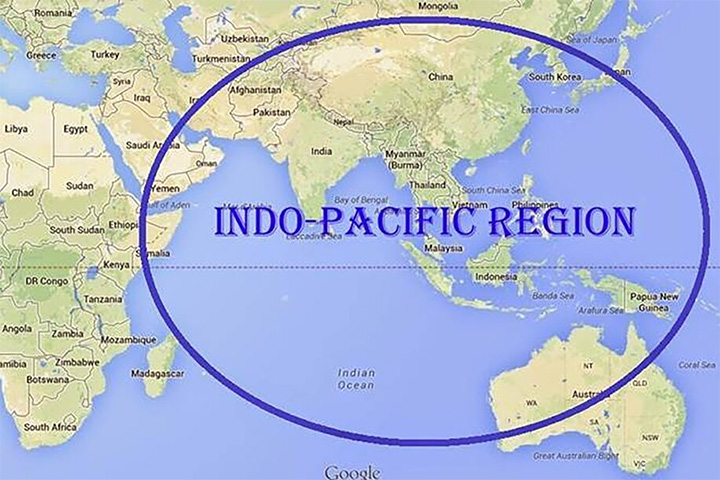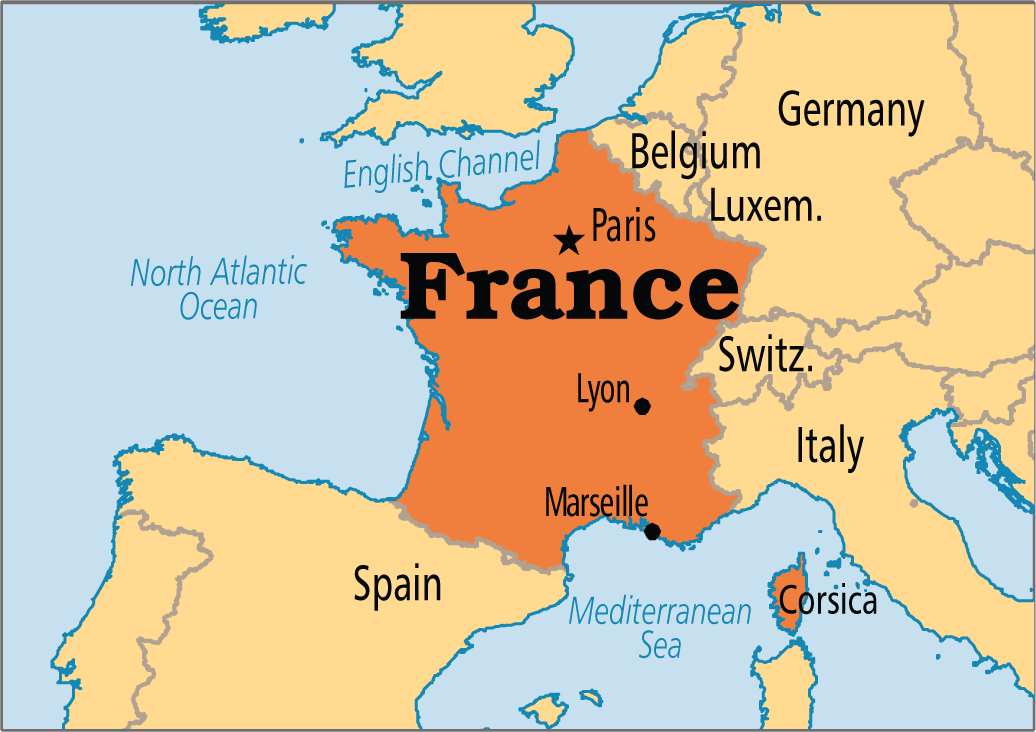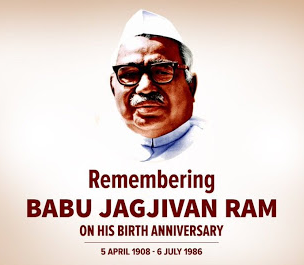Challenges with National Security Act, 1980
Why in News
In some cases it has been found that the National Security Act-1980 (NSA) was invoked to prevent the person from being released from judicial custody even if the accused had got bail.
- The NSA empowers the state to detain a person without a formal charge and without trial.
Key Points
- About the National Security Act, 1980:
- The NSA is a preventive detention law.
- Preventive Detention involves the detainment of a person in order to keep him/her from committing future crimes and/or from escaping future prosecution.
- Article 22 (3) (b) of the Constitution allows for preventive detention and restriction on personal liberty for reasons of state security and public order.
- Further, Article 22 (4) states that no law providing for preventive detention shall authorise the detention of a person for a longer period than three months unless:
- An Advisory Board reports sufficient cause for extended detention.
- Such a person is detained in accordance with the provisions of any law made by the Parliament.
- Gives Power to the Government:
- The NSA empowers the Centre or a State government to detain a person to prevent him from acting in any manner prejudicial to national security.
- The government can also detain a person to prevent him from disrupting public order or for maintenance of supplies and services essential to the community.
- Period of Confinement: The maximum period for which one may be detained is 12 months. But the term can be extended if the government finds fresh evidence.
- The NSA is a preventive detention law.
- Issues with the Act:
- It is an administrative order passed either by the Divisional Commissioner or the District Magistrate (DM) and not detention ordered by police based on specific allegations or for a specific violation of the law.
- Conditions when NSA can be evoked:
- Even if a person is in police custody, the DM can invoke NSA against him.
- If a person has been granted bail by a trial court, he can be immediately detained under the NSA.
- If the person has been acquitted by the court, the same person can be detained under the NSA.
- Against the Constitutional Right: The law also takes away an individual’s constitutional right (Article 22 of Indian Constitution) to be produced before the magistrate within 24 hours as is the case when the accused is in police custody.
- The detained person also does not have the right to move a bail application before a criminal court.
- Immunity for Passing and Carrying Out Order: The DM who passed the detention order is protected under the Act, no prosecution or any legal proceeding can be initiated against the official who carried out the orders.
- Supreme Court Observation:
- The Court has held that the preventive detention under NSA has to be strictly maintained with the delicate balance between social security and citizen freedom.
- It also held that to prevent “misuse of this potentially dangerous power, the law of preventive detention has to be strictly construed” and “meticulous compliance with the procedural safeguards” has to be ensured.
- Safeguard Against the Act:
- Procedural safeguard under the NSA is granted under Article 22 (5), where all the detained persons have the right to make an effective representation before an independent advisory board.
- This advisory board consists of three members and the board is chaired by a member who is a judge of a High Court.
- The writ of Habeas Corpus is also the protection guaranteed under the Constitution against the unchecked state power of taking people into custody under the NSA.
- Procedural safeguard under the NSA is granted under Article 22 (5), where all the detained persons have the right to make an effective representation before an independent advisory board.
Forest Fires: A Very Big Concern
Why in News
Since the advent of the year 2021, there has been a series of forest fires in many states of India, including in Wildlife Sanctuaries.
Key Points
- Forest Fires:
- Also called bush or vegetation fire or wildfire, it can be described as any uncontrolled and non-prescribed combustion or burning of plants in a natural setting such as a forest, grassland, brush land or tundra, which consumes the natural fuels and spreads based on environmental conditions (e.g., wind, topography).
- Forest Fires can be incited by human actions, such as land clearing, extreme drought or in rare cases by lightning.
- There are three conditions that need to be present in order for a wildfire to burn: fuel, oxygen, and a heat source.
- Instances of Forest Fires in 2021:
- January saw prolonged fires in Uttarakhand, Himachal Pradesh (Kullu Valley) and Nagaland-Manipur border (Dzukou Valley).
- The Simlipal National Park in Odisha saw a major fire between February-end and early March.
- Recent fires also include those in Bandhavgarh Forest Reserve in Madhya Pradesh, and in sanctuaries for the Asiatic lion and the great Indian bustard in Gujarat.
- Vulnerability of India’s Forests to Fires:
- As of 2019, about 21.67% (7,12,249 sq km) of the country’s geographical area is identified as forest, according to the India State of Forest Report 2019 (ISFR) released by the Forest Survey of India (FSI), Dehradun.
- Tree cover makes up another 2.89% (95, 027 sq km).
- Based on previous fire incidents and records, forests of the Northeast and central India regions are the most vulnerable areas to forest fires.
- Forests in Assam, Mizoram and Tripura have been identified as ‘extremely prone’ to forest fire.
- States with large forest areas under the ‘very highly prone’ category include Andhra Pradesh, Manipur, Meghalaya, Mizoram, Nagaland, Odisha, Maharashtra, Bihar and Uttar Pradesh.
- As per the 2020-2021 annual report of the MoEFCC, Western Maharashtra, Southern Chhattisgarh and areas of Telangana and Andhra Pradesh, along with central Odisha, are turning into ‘extremely prone’ forest fire hotspots.
- Areas under the ‘highly prone’ and ‘moderately prone’ categories make up about 26.2% of the total forest cover — a whopping 1,72,374 sq km.
- As of 2019, about 21.67% (7,12,249 sq km) of the country’s geographical area is identified as forest, according to the India State of Forest Report 2019 (ISFR) released by the Forest Survey of India (FSI), Dehradun.
- Cause of Forest Fires:
- Forest fires can be caused by a number of natural causes, but many major fires in India are triggered mainly by human activities.
- Emerging studies link climate change to rising instances of fires globally, especially the massive fires of the Amazon forests in Brazil and in Australia in the last two years.
- Fires of longer duration, increasing intensity, higher frequency and highly inflammable nature are all being linked to climate change.
- In India, forest fires are most commonly reported during March and April, when the ground has large quantities of dry wood, logs, dead leaves, stumps, dry grass and weeds that can make forests easily go up in flames if there is a trigger.
- In Uttarakhand, the lack of soil moisture too is being seen as a key factor. In two consecutive monsoon seasons (2019 and 2020), rainfall has been deficient by 18% and 20% of the seasonal average, respectively.
- Most fires are man-made, sometimes even deliberately caused. For example, in Odisha, which saw a major fire last month in Simlipal forest, villagers are known to set dry leaves to fire in order to collect mahua flowers, which go into preparation of a local drink.
- Forest fires can be caused by a number of natural causes, but many major fires in India are triggered mainly by human activities.
- Impact of Forest Fire:
- Forest fires can have multiple adverse effects on the forest cover, soil, tree growth, vegetation, and the overall flora and fauna.
- Fires render several hectares of forest useless and leave behind ash, making it unfit for any vegetation growth.
- Heat generated during the fire destroys animal habitats.
- Soil quality decreases with the alteration in their compositions.
- Soil moisture and fertility, too, is affected.
- Forests can shrink in size.
- The trees that survive fire often remain stunted and growth is severely affected.
- Importance of Forests:
- Forests play an important role in mitigation and adaptation to climate change.
- They act as a sink, reservoir and source of carbon.
- A healthy forest stores and sequesters more carbon than any other terrestrial ecosystem.
- In India, with 1.70 lakh villages in close proximity to forests (Census 2011), the livelihood of several crores of people is dependent on fuelwood, bamboo, fodder, and small timber.
- Efforts to Mitigate Forest Fires:
- Since 2004, the FSI (Forest Survey of India) developed the Forest Fire Alert System to monitor forest fires in real time.
- National Action Plan on Forest Fires (NAPFF) 2018 and Forest Fire Prevention and Management Scheme.
- Since 2004, the FSI (Forest Survey of India) developed the Forest Fire Alert System to monitor forest fires in real time.
International Day for the Elimination of Racial Discrimination
Why in News
Every year, 21st March, is observed as International Day for the Elimination of Racial Discrimination.
- The day calls for solidarity against racism and racial discrimination.
Key Points
- About:
- The United Nation General Assembly in October 1966 proclaimed 21st March as the International Day for the Elimination of Racial Discrimination, to be commemorated annually.
- On that day, in 1960, police opened fire and killed 69 people at a peaceful demonstration in Sharpeville, South Africa, against the apartheid pass laws.
- Aparthied:
- It was a policy which governed relations between South Africa’s white minority and non-white majority.
- It sanctioned racial segregation, poltical and economic discrimination against non-whites.
- Aparthied:
- Proclaiming the Day in 1966 which signifies the struggle to end the policy of apartheid in South Africa.
- 2021 Theme:
- ‘Youth standing up against racism'
- Significance:
- Racial discrimination, beyond being a breach of human rights, has harmful effects on human health and well-being, and risks wider disruptions to social cohesion.
Racism
- About:
- Racism, also called racialism, the belief that humans may be divided into separate and exclusive biological entities called “races”; that there is a causal link between inherited physical traits and traits of personality, intellect, morality, and other cultural and behavioral features; and that some races are innately superior to others.
- The term is also applied to political, economic, or legal institutions and systems that engage in or perpetuate discrimination on the basis of race or otherwise reinforce racial inequalities in wealth and income, education, health care, civil rights, and other areas.
Note
- Xenophobia and Racism mostly overlap, but the stark difference is racism is discrimination based on physical characteristics whereas xenophobia is discrimination based on the perception that someone is foreign or originating from another community or nation.
- The word Xenophobia originates from the Greek word Xeno.
- Current Prevalence:
- The anonymity of the Internet has allowed racist stereotypes and inaccurate information to spread online.
- At the onset of the pandemic, traffic to hate sites and specific posts against Asians grew by 200% in the US.
- In India and in Sri Lanka, social media groups and messaging platforms were used to call for social and economic boycotts of religious minorities, amid false information accusing them of spreading the virus.
- Structural forms of discrimination, including micro-aggressions and everyday indignities, remain widespread.
- The use of new technologies and artificial intelligence in security raise the spectre of ‘techno-racism’, as facial recognition programmes can misidentify and target racialized communities.
- Prejudiced attitudes and discriminatory acts, whether subtle or overt, aggravate existing inequalities in societies.
- A study published by The Lancet drew attention to the social dimension of the Covid-19 pandemic and the greater vulnerability of ethnic minorities, who have been disproportionately affected.
- The World Health Organization has cautioned on the dangers of profiling and stigmatising communities that can lead to fear and the subsequent concealment of cases and delays in detection.
- The anonymity of the Internet has allowed racist stereotypes and inaccurate information to spread online.
- Other Initiatives Against Racism:
- United Nations Educational, Scientific and Cultural Organization’s (UNESCO) actions against racism through education, the sciences, culture, and communication offer an example of a way forward.
- The International Coalition of Inclusive and Sustainable Cities of UNESCO provides an additional platform for city-level planning and a laboratory for good practices in the fight against racism.
- UNESCO’s headquarters in Paris hosted a Global Forum against Racism and Discrimination on 22nd March 2021, in partnership with the Republic of Korea.
- The Forum gathered policymakers, academics, and partners to initiate a new multi-stakeholder partnership on anti-racism.
- In January 2021 the World Economic Forum launched a coalition of organizations committed to improving racial and ethnic justice in the workplace.
- The ‘Black Lives Matter’ protests gained momentum in not only the United States but the whole world. People, as well as many governments across different countries, came forth against the prevalence of racial discrimination worldwide.
- United Nations Educational, Scientific and Cultural Organization’s (UNESCO) actions against racism through education, the sciences, culture, and communication offer an example of a way forward.
- Provisions Against Racial Discrimination in India:
- Article 15, Article 16 and Article 29 of the Constitution of India prohibit discrimination on grounds of “race”.
- Section 153A of the Indian Penal Code (IPC) also refers to “race”.
- India also ratified the International Convention on the Elimination of All Forms of Racial Discrimination (ICERD) in 1968.
Way Forward
- Through new approaches to intercultural dialogue and learning, youth and communities can be equipped with skills to eradicate harmful stereotypes and foster tolerance.
- Recent and new manifestations of racism and discrimination call for renewed commitments to mobilise for equality. Racism will not be overcome with mere professions of good faith but must be combatted with anti-racist action.
- A global culture of tolerance, equality and anti-discrimination should be built first and foremost in the minds of women and men.
Multilateral Maritime Exercise La Perouse
Why in News
Indian Navy Ships INS Satpura and INS Kiltan alongwith P8I Long Range Maritime Patrol Aircraft are participating, for the first time in multilateral maritime exercise La Pérouse, being conducted in the Eastern Indian Ocean Region from 5th to 7th April 2021.
- Post conduct of La Perouse, the Indo-French Naval exercise “Varuna“ is scheduled in the Western Indian Ocean, wherein UAE too shall be participating.
Key Points
- About the Exercise:
- The first edition of La Pérouse joint exercise, initiated by France in 2019, included ships from Australia, Japan and the US.
- The exercise is named after the eighteenth century French Naval explorer.
- India's participation in 2021 completed the QUAD force representation in the French led Naval Exercise.
- QUAD is a grouping of India, USA, Australia and Japan which aims to safeguard the interests of democratic nations in the Indo-Pacific region and address global challenges.
- It will witness complex and advanced naval operations including surface warfare, anti-air warfare and air defence exercises, weapon firing exercises, cross deck flying operations, tactical manoeuvres and seamanship evolutions such as replenishment at sea.
- It will provide an opportunity for these five like-minded, high-end naval forces to develop closer links, sharpen their skills, and promote maritime cooperation throughout a free and open Indo-Pacific.
- Naval Significance of Indo-Pacific:
- The Indo-Pacific is slowly but surely turning into a serious Naval Theatre for multi-national activities with a vision to establish a free, open, inclusive and a rule-based ordering of the Indo-Pacific to support the freedom of navigation and peaceful cooperative use of the seas.
- The goal is to respect and adhere to the international laws like the United Nations Convention on the Law of the Sea (UNCLOS) and peaceful resolution of territorial sea disputes.
- The role of the QUAD navies in the IOR (Indian Ocean Region) has been well illustrated by the effective cooperative engagement capabilities of the multi-national Naval powers through naval exercises like formation sailing, live fire drills, Search and Rescue (SAR) operations etc.
- Navies of member countries of QUAD participated in Malabar wargaming exercise in November 2020.
- On the other hand, China endeavours to establish a defensive perimeter around its seas (Yellow Sea, East China Sea and part of South China Sea) by following a sea denial policy in these regions.
- QUAD+ France Pacific Ocean Concerns:
- The region of Pacific Islands stretches from Hawaii in the north to Tonga in the south, and Easter Island in the east to New Caledonia in the west.
- US interest in the Indo-Pacific region has always been well illustrated with the fact that US Indo-Pacific Command established after World War II is the largest unified command.
- France has a direct strategic and economic stake in New Caledonia, French Polynesia, and Wallis and Futuna. France is a member of the Pacific Community and the Secretariat of the Pacific Regional Environment Programme (SPREP).
- Japan although has trade ties with China but has always been suspicious of China’s growth as a military power. China’s assertiveness closer to Japanese waters and airspace have been a testing time for Japan.
- Indian Navy has always maintained a tactical advantage over the IOR to ensure compliance to the internationally established Rules of the Road (ROR) for the seas.
- This has been respected by the world (like declaration of warships transiting IOR etc.), but Indian Navy has observed and reported multiple sightings of undeclared Chinese ships and submarines suspiciously lurking within the IOR.
Indo-French Joint Exercises
- Desert Knight-21 and Garuda (Air exercise)
- Varuna (Naval exercise)
- Shakti (Army exercise)
Sankalp Se Siddhi: TRIFED
Why in News
The Tribal Cooperative Marketing Development Federation of India (TRIFED), under the Ministry of Tribal Affairs, has launched “Sankalp se Siddhi” - Village and Digital Connect Drive.
- The main aim of this drive is to activate the Van Dhan Vikas Kendras (VDVKs) in the villages.
Key Points
- About Sankalp se Siddhi Drive:
- The drive will entail 150 teams (10 in each region from TRIFED and State Implementation Agencies/Mentoring Agencies/Partners) visiting ten villages each.
- Thus, 100 villages in each region and 1500 villages in the country will be covered.
- The visiting teams will also identify locations and shortlist potential Van Dhan Vikas Kendras for clustering as TRIFOOD, and SFURTI units as larger enterprises.
- Scheme of Fund for Regeneration of Traditional Industries (SFURTI) is a scheme of the Ministry of Micro, Small & Medium Enterprises (MSME).
- Rs. 200 crore Sales during the next 12 months is targeted as a result of this initiative once the VDVKs are activated in these 1500 villages.
- The teams will also identify tribal artisans and other groups and empanel them as suppliers so that they can have access to larger markets through the Tribes India network – both physical outlets and TribesIndia.com.
- The drive will entail 150 teams (10 in each region from TRIFED and State Implementation Agencies/Mentoring Agencies/Partners) visiting ten villages each.
- Other Involvements of the TRIFED:
- Village and Digital Connect Initiative:
- To ensure that existing schemes and initiatives reach the tribals, TRIFED’s regional officials across the country have been visiting identified villages with a significant tribal population.
- Schemes for Ensuring Fair Prices to Tribals:
- Schemes such as Mechanism for Marketing of Minor Forest Produce (MFP) Through Minimum Support Price (MSP) and Development of Value Chain for MFP provide MSP to gatherers of forest produces.
- The schemes ensure sustainability of the resource base by addressing the problems that tribals face such as perishable nature of the produce, lack of holding capacity, lack of marketing infrastructure, exploitation by middlemen, etc.
- Tech For Tribals:
- Tech For Tribals program aims to transform 5 crore Tribal Entrepreneurs by capacity building and imparting entrepreneurship skills to tribal forest produce gatherers enrolled under the Pradhan Mantri Van Dhan Yojana (PMVDY).
- The Van Dhan Vikas Yojana is an initiative of the Ministry of Tribal Affairs and TRIFED. It was launched to improve tribal incomes through value addition of tribal products.
- The program will ensure higher success rate of the Tribal Entrepreneurs by enabling and empowering them to run their business with marketable products with quality certifications.
- Tech For Tribals program aims to transform 5 crore Tribal Entrepreneurs by capacity building and imparting entrepreneurship skills to tribal forest produce gatherers enrolled under the Pradhan Mantri Van Dhan Yojana (PMVDY).
- Van Dhan Vikas Kendras:
- Van Dhan Vikas Kendras have been provided by Van Dhan Vikas Yojana.
- Van Dhan Vikas Kendra (VDVKs) are for providing skill upgradation and capacity building training to tribals and setting up of primary processing and value addition facilities.
- Tribals are trained here and then provided with working capital to add value to the products, which they collect from the jungle.
- TRIFOOD Scheme:
- It is a joint initiative of the Ministry of Food Processing Industry, Ministry of Tribal Affairs and TRIFED and it promotes value addition to MFP.
- Village and Digital Connect Initiative:
National Maritime Day 2021
Why in News
Recently, the Ministry of Ports, Shipping & Waterways celebrated the 58th National Maritime Day (5th April).
- Maritime India Vision-2030, was also discussed at the occasion.
Key Points
- About:
- National Maritime Day is celebrated every year on 5th April to commemorate the maiden voyage of the first Indian flag merchant vessel 'S.S LOYALTY' from Mumbai to London, on April 5th, 1919.
- 2021 Theme:
- ‘Sustainable Shipping beyond Covid-19’.
- Significance:
- It is celebrated to encourage the merchant shipping industry of India. Shipping contributes a lot to the country’s economy.
- At present, 90% of India’s international trade in terms of volume and 77% in terms of value is moved by sea.
- Other Initiatives:
- Sagarmala Initiative:
- The Sagarmala Programme was approved by the Union Cabinet in 2015 which aims at holistic port infrastructure development along the 7,516-km long coastline through modernisation, mechanisation and computerisation.
- Project Unnati:
- The shipping ministry launched Project Unnati in 2014 under which efficiency of equipment was studied and every activity was scrutinised to identify excesses/mistakes.
- Blue Economy Policy:
- The policy document highlights the blue economy as one of the ten core dimensions for national growth and It emphasizes policies across several key sectors to achieve holistic growth of India’s economy.
- Joined International Maritime Organization:
- India is also a member of the International Maritime Organization (IMO).
- IMO is a specialized agency of the United Nations (UN). It is a global standard-setting authority with responsibility to improve the safety and security of international shipping and prevention of marine and atmospheric pollution by ships.
- National Waterways:
- As per the National Waterways Act 2016, 111 waterways have been declared as National Waterways (NWs).
- The Sagar-Manthan:
- Mercantile Marine Domain Awareness Centre has been launched.
- It is an information system for enhancing maritime safety, search and rescue capabilities, security and marine environment protection.
- Ship Repair Clusters:
- They will be developed along both coasts by 2022.
- Ship Recycling:
- Domestic ship recycling industry will also be promoted to create 'Wealth from Waste'.
- India has enacted Recycling of Ships Act, 2019 and agreed to the Hong Kong Convention for Ship Recycling.
- Domestic ship recycling industry will also be promoted to create 'Wealth from Waste'.
- Sagarmala Initiative:
Maritime India Vision 2030
- About:
- It is a ten-year blueprint for the maritime sector which was released by the Prime Minister of India at the Maritime India Summit 2021.
- It will supersede the Sagarmala initiative and aims to boost waterways, give a fillip to the shipbuilding industry and encourage cruise tourism in India.
- Policy Initiatives and Development Projects:
- Maritime Development Fund:
- A Rs. 25,000-crore fund, which will provide low cost, long-tenure financing to the sector with the Centre contributing Rs. 2,500 crore over seven years.
- Port Regulatory Authority:
- A pan-India port authority will be set up under the new Indian Ports Act (to replace the old Indian Ports Act 1908) for enabling oversight across major and non-major ports, enhance institutional coverage for ports and provide for structured growth of the ports sector to boost investor confidence.
- Eastern Waterways Connectivity Transport Grid Project:
- It aims to develop regional connectivity with Bangladesh, Nepal, Bhutan and Myanmar.
- Riverine Development Fund:
- Calls for extending low cost, long-term financing for inland vessels with the support of a Riverine Development Fund (RDF) and for extending the coverage of the tonnage tax scheme (applicable to ocean-going ships and dredgers) to inland vessels to enhance the availability of such vessels.
- Rationalisation of Port Charges:
- It will make them more competitive, besides doing away with all hidden charges levied by ship liners to bring in more transparency.
- Promotion of Water Transport:
- For decongestion of urban areas, and developing waterways as an alternative means of urban transport.
- Maritime Development Fund:
Babu Jagjivan Ram
Why in News
Recently, the Prime Minister paid tributes to freedom fighter and former Deputy Prime Minister Babu Jagjivan Ram on his 113th birth anniversary.
- Jagjivan Ram, popularly known as Babuji, was a national leader, a freedom fighter, a crusader of social justice, a champion of depressed classes and an outstanding Parliamentarian.
Key Points
- Birth:
- Jagjivan Ram was born on 5th April 1908 in Chandwa in Bihar to a Dalit family.
- Early Life and Education:
- He pursued his schooling at the nearby town of Arrah where he faced discrimination for the first time.
- He was considered ‘untouchable’ and had to drink water from a different pot. Jagjivan Ram protested against this by breaking the pot. The principal then had to remove the separate pot from the school.
- In 1925, Jagjivan Ram met scholar Pandit Madan Mohan Malaviya and was greatly inspired by him. On Malaviya’s invitation, he joined the Banaras Hindu University.
- Even at the university, Jagjivan Ram faced discrimination. This inspired him to protest against such social boycotts of a section of society.
- He also organised the scheduled castes to protest against injustice.
- After his stint at BHU, he joined the University of Calcutta from where he secured a B.Sc. degree in 1931.
- Jagjivan Ram had organized a number of Ravidas Sammelans and had celebrated Guru Ravidas Jayanti in different areas of Calcutta (Kolkata).
- He pursued his schooling at the nearby town of Arrah where he faced discrimination for the first time.
- Pre Independence Contributions:
- In 1931, he became a member of the Indian National Congress (Congress Party).
- He was instrumental in the foundation of the All India Depressed Classes League, an organisation dedicated to attaining equality for untouchables, in 1934-35.
- He was a champion of social equality and equal rights for the Depressed Classes.
- In 1935, he proposed at a session of the Hindu Mahasabha that drinking water wells and temples be open to untouchables.
- In 1935, Babuji also appeared before the Hammond Commission at Ranchi and demanded, for the first time, voting rights for the Dalits.
- He was jailed twice in the early 1940s for his political activities associated with the Quit India movement against British rule.
- Post Independence Contributions:
- When Jawaharlal Nehru formed the provisional government, Jagjivan Ram became its youngest minister.
- After independence he held the labour portfolio until 1952. Thereafter he served in Nehru’s cabinet in the posts of minister for communications (1952–56), transport and railways (1956–62), and transport and communications (1962–63).
- He served as minister for food and agriculture (1967–70), and in 1970 he was made minister of defence.
- The Indo-Pakistan War of 1971 was fought when he was the defence minister.
- He left Congress in 1977 and joined the Janata Party alliance, along with his Congress for Democracy (new party). He later served as the Deputy Prime Minister of India (1977–79).
- Jagjivan Ram was a member of the Parliament uninterrupted from 1936 to 1986 (40 years) and this is a world record.
- He also holds another record for being the longest-serving cabinet minister in India (30 years).
- Death:
- He died on 6th July 1986 at New Delhi.
- His memorial at his cremation place is named Samta Sthal (Place of Equality).

